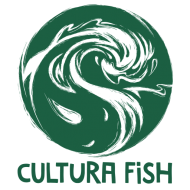Villains characters in Vietnamese hát bội
“Nịnh” motif, “Tướng” (villain) and “Yêu đạo” motifs
(Đọc phiên bản tiếng Việt tại đây)
NỊNH MOTIF
“Nịnh” is the term to describe the male villain character; tends to have a white face. The level 2 of nịnh motif include:
Master nịnh
Including all the general traits of the nịnh motif, this character already establishes a powerful standing. Example: tạ Thiên Lăng (the play “San Hậu”)
Character Đổng Trác played by Hoàng Hà
Feeble nịnh
Also carries the general traits of nịnh motif, although this character hasn’t achieved a powerful position. Example: Vưu Hồn, Bí Trọng (the play “Bá Ấp Khảo”).
Despite the different branches, their technical elements are not too far different in styling, only more distinguishable through manners. If the original nịnh is an arrogant figure, then feeble nịnh is only a coward and sycophant.
TƯỚNG AND YÊU ĐẠO MOTIF
Comparing to other motifs, the tướng and yêu đạo (or it can be called as turtle master motif) are the characters that deeply reflect the dramatic element of hát bội practice from their singing-dialogues technique, costuming, to choreography. This has made the audience and connoisseurs pay much attention to this motif.
Tướng motif
General description: Tướng motif is the character type that inherit some traits on manners, actions, and choreography of kép that is brawny in type: Assertive, swift, powerful singing-dialogues delivery. However, the significant detail to pay attention to is their makeup being made as mask-like, which they are diverse with various stylised expressions. Depends on their role in the play, we have protagonist tướng (the tướng that belongs in the good side and loyal) such as Trịnh n (the play “Sentencing Trịnh n”), Hoàng Phi Hổ (the play “Bá Ấp Khảo”), etc; and villain tướng (the tướng that are evil and vindictive), Ô Lợi Hắc (the play “Goddess offers Ngũ Linh flag”) etc.

The motif can also be deeper understood in its level 2 of formation- major tướng and minor tướng. Major tướng includes the traits that are mentioned above, with social standing and hold a crucial role in the plot. Minor tướng, on the contrary, are characters that don’t hold crucial position in the script like Châu Thương (the play “Battle at Phàn fortress”) Tiết Quỳ (The play “Tiết Giao steals the pearl”), etc.
Major tướng Tạ Ôn Đình played by Hữu Danh
Minor tướng Tạ Lôi Nhược played by Linh Phước
YÊU ĐẠO MOTIF (TURTLE MASTER)
Similar like tướng motif, yêu đạo motif has a distinctive dramatic element of hát bội. However, yêu đạo tends to be portrayed as villain characters, in which they possess opposite traits from the protagonist, power abuser, with a sense of justice according to feudal law. Moreover, these characters tend to start off with non-human origins, they’ve honed their magical ability to become human so it made their manners appear animalistic. The character makeups are also suggestive of the manners and symbolism of their background. Examples such as Dư Hồng (the play “Lưu Kim Đính liberate at Thọ Châu”) is originally a red bird that trained itself into human form so the eye makeup mimics a bird motif, with a red face makeup base. The design of yêu đạo/ turtle master tends to use weirdly big eyes to express an eerie manner, big tummy to indicate magic (or it could be called “bụng phép”), with costume similar to the Taoist monks.
Character Sage Dư Hồng played by Nguyễn Tuấn
————
TYPE OF CHARACTERS IN VIETNAMESE HÁT BỘI, co-produced by Hiếu Văn Ngư – Cultura Fish and ICHCAP. Please give proper citation and do not repost by any type.
- Researcher: Vương Hoài Lâm
- Translator (Vietnamese – English): Hà Hoàng Minh Trang
- Editor: Lục Phạm Quỳnh Nhi
- Photos: Giang Phạm
————
- To read other articles in this series: https://culturafish.com/en/types-of-characters-in-vietnamese-hat-boi/
- English version of the project on ICHLINK: https://www.ichlinks.com/exhibition/hat-boi/
- Promotion video https://youtu.be/vo0ukRj70CU
————
ICHCAP-UNESCO: An international network and information centre for intangible cultural heritage of the Asia-Pacific region under UNESCO.
ichLinks: officially launched by ICHCAP-UNESCO in 2020 with the main activity of developing a platform system for sharing information on intangible cultural heritage in the Asia-Pacific region.




